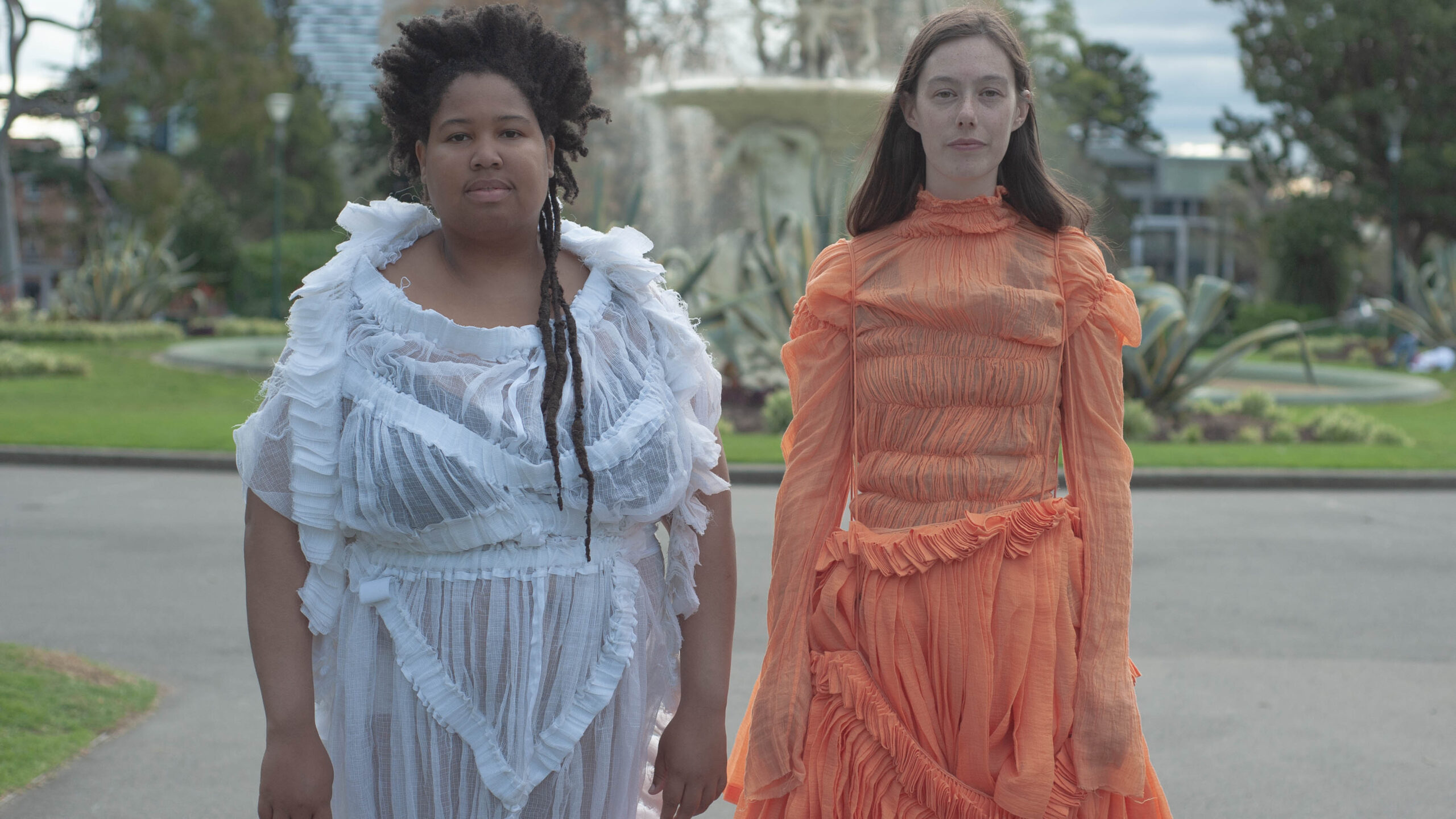Although they rely on completely different means of expression, Yvette Janine Jackson’s radio operas and heavy doom metal played by Divide and Dissolve both aptly recount the oppression suffered by minorities in a globalised world.
Translation: Aleksandra Szkudłapska
After the bizarre and sad 2020, the beginning of Yvette Janine Jackson’s Freedom is perhaps what we all need most at the moment. The title represents the ultimate objective – but how does one reach it? We land in a cargo ship transporting blacks to the USA – slaves, whose existence is only suggested by the mysterious sounds of the spaces below decks. They are abstract, dark, built using field recordings and strange electronic sounds, full of reverb and distortion. Jackson falls back on the method explored by Matana Roberts in her sound patchworks; the aesthetics she conjures also remind me of Moor Mother’s collages. Halfway through the gloomy journey to “Destination Freedom”, we begin to drift towards the unknown, before we switch to a futurist flight, which unfolds as the artist gradually adds new details. Her basis is electronics and acoustic instruments – both are often modified to depart from their original sound.
Side B, “Invisible People”, reaches for different formats – recordings of Barack Obama talking about same-sex marriage, online comments in which trolls lash out at women or queer communities. The composer combines horizontal layers, gradually building dramatic tension, but sometimes relies on the vertical method, and juxtaposes individual samples. We hear “Gay, Lesbians, Transgender, Bisexuals!” screamed with added reverb, followed by “He’s going to destroy this country”, which is looped with the repeated “and equal”. Where are we actually? The piece, which follows the free jazz protest music ethos, sometimes sounds orchestral and melodious, verging on soul. But the finale – slowed-down pace, which has us circling between the past and present – is highly paradoxical. It is hard to sum up the direction of this debate.
She worked at the Computer Music Center, on ships, and in sound design; she is interested in the World Soundscape Project and Murray Schafer’s ideas. All of these influences come together at Freedom. Jackson brilliantly builds her narrative by combining various sources of sound: electronic layers, hip-hop/soul melodies, effects, field recordings, and sound art. She applies the free jazz method to create collages, weaving an Afro-Futurist story with a twisted chronology of place and time, yet one that is strongly marked by the politics of African Americans and sexual minorities fighting for respect. Inspired by acoustic ecology, Jackson creates an imaginary radio drama, both rooted in history and appealing to our imagination today. At a time that constantly inundates us with images, her multi-layered operas bring a different type of narrative, yet one that does not bring catharsis. This is a session of listening in the dark, to dark times that have not yet come to an end.
Similarly gloomy stories are served by the Australian duo Divide and Dissolve. Reverb, emptiness, and disquiet may be heard already from the outset, as Takiaya Reed plays her sax solo in “Oblique”. In a moment, it will be drowned out by the doom metal guitar strokes and the thrashing hi-hats of Sylvie Nehill’s drums.Where Freedom was all about nuance and detail, here the music is like a battleaxe – raw, very distant from polished metal albums, which makes it a perfect vehicle for discomfort and rage. Even if there are afterimages of the sax in the background, what is crucial here is the ever denser texture of amps and crushing drums, sometimes with industrial consistency.
Divide and Dissolve do not offer contemplation – their sludge and doom is direct, it hits you straight in the face.You don’t even need words, as Gas Lit is filled to the brim with emotions, and blunt enough. This is a journey through the darkness, whose aim is to liberate ethnic minorities, which still have to oppose and contest the domination of white supremacists. I strongly recommend reading up on the band’s message, which might not be immediately clear through instrumental music. Their previous work, Abomination, made a mark with its raw, but also pure and straight-to-the-point sound. They gained publicity when in the video to “Resistance”, they poured a urine-resembling liquid on colonialist statues. Haters had the clip removed, but Youtube reinstated it, after it turned out that the performance relied on coloured water. Yet the symbol is clear and became etched in the memory of many – and that was the whole point. Another point of reference is the third track on the album “Did You Have Something To Do With It”, where Minori Sanchiz-Fung reads a text calling for social change.What forms part of the narrative of inequality and oppression on Freedom is offered here as a much more direct commentary, yet one that encompasses a similarly broad perspective.
Reed and Nehill come from Australia, but represent ethnic minorities (Cherokee and Maori, respectively). They speak from the perspective of the oppressed, but do so in a loud voice. Their music has the strength and trance quality of Earth, the coarseness and texture of Sunn O)), but also a kind of steady and consistent narrative flow. The sparse array of instruments – the trademark of Lightning Bolt or Poland’s Woody Alien – here takes up the load, draws on, and invites the ear to a new kind of experience. “Gas Lit” refers to the phenomenon of manipulating someone’s perception of reality. Here, the music is a scream, an outpour of anger in response, aimed not at feeling sorry for yourself, but taking action.
YVETTE JANINE JACKSON Freedom, Fridman Gallery
DIVIDE AND DISSOLVE Gas Lit, Invada




